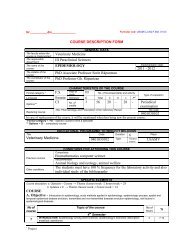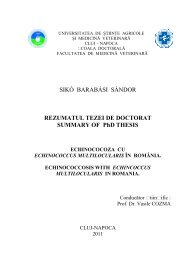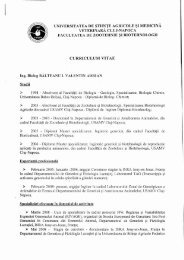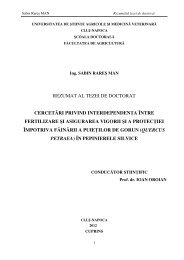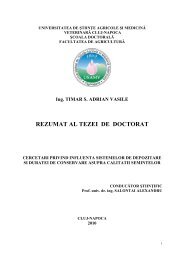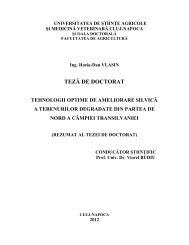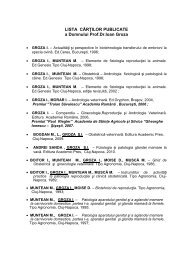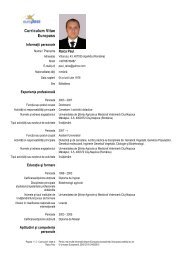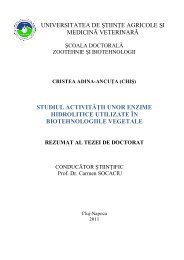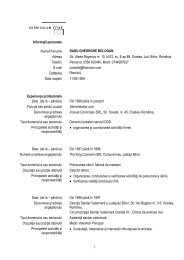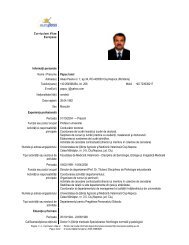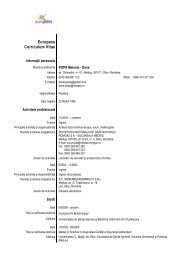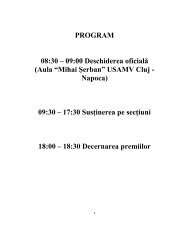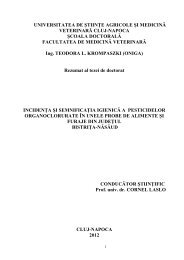Rezumatul tezei de doctorat - USAMV Cluj-Napoca
Rezumatul tezei de doctorat - USAMV Cluj-Napoca
Rezumatul tezei de doctorat - USAMV Cluj-Napoca
Create successful ePaper yourself
Turn your PDF publications into a flip-book with our unique Google optimized e-Paper software.
asexual one. We can precisely conclu<strong>de</strong> that in specific laboratory conditions, all fungal<br />
isolates had flagella on primary zoospores.<br />
Regarding the <strong>de</strong>velopment of sexual reproduction organs (antheridia and oogonia),<br />
there are differences from on fishpond and location to another. This presence or absence of<br />
the sexual reproduction can be attributed to the fact that the existent species are different,<br />
and some of them do not realyze the sexual reproduction in vitro (Fregeneda Gran<strong>de</strong>s, 2000;<br />
Dieguez Uribeondo, 2007).<br />
A statistical analysis regarding the <strong>de</strong>velopment of sexual reproduction organs at the<br />
analyzed fungal species from Saprolegniaceae family (69 samples), allows us to conclu<strong>de</strong><br />
that 41 isolates (59,42%) have sexual reproduction organs, observed at the microscope. At<br />
28 samples (40,58%), their presence was not visualized (table 3).<br />
Hyphal<br />
aspect<br />
Table 3<br />
Synthesis regarding the <strong>de</strong>velopment of reproduction organs<br />
at analyzed fungal species from Saprolegniaceae family<br />
Sexual reproduction<br />
Asexual<br />
Present<br />
Absent<br />
reproduction<br />
(Flagella presence)<br />
No.of<br />
samples<br />
Percent<br />
(%)<br />
No.of<br />
samples<br />
Percent<br />
(%)<br />
No.of<br />
samples<br />
Percent<br />
(%)<br />
Unsegmented 41 59,42 28 40,58% 69 100%<br />
II.4. RESULTS REGARDING SAPROLEGNIA’S DNA<br />
EXTRACTION AND QUANTIFICATION<br />
II.4.1. DNA extraction<br />
Each sample of biologic material was divi<strong>de</strong>d, the two samples being tested by an<br />
extraction method, to conclu<strong>de</strong> which one of the two methods is more efficient for this type<br />
of fungi, respecting the DNA quantity and purity.<br />
The results of the 69 samples extracted by each method, are indicating that DNA<br />
purities and quantities performed by Nanodrop ND 1000 spectrophotometer differ from one<br />
fishpond and method to another.<br />
61



